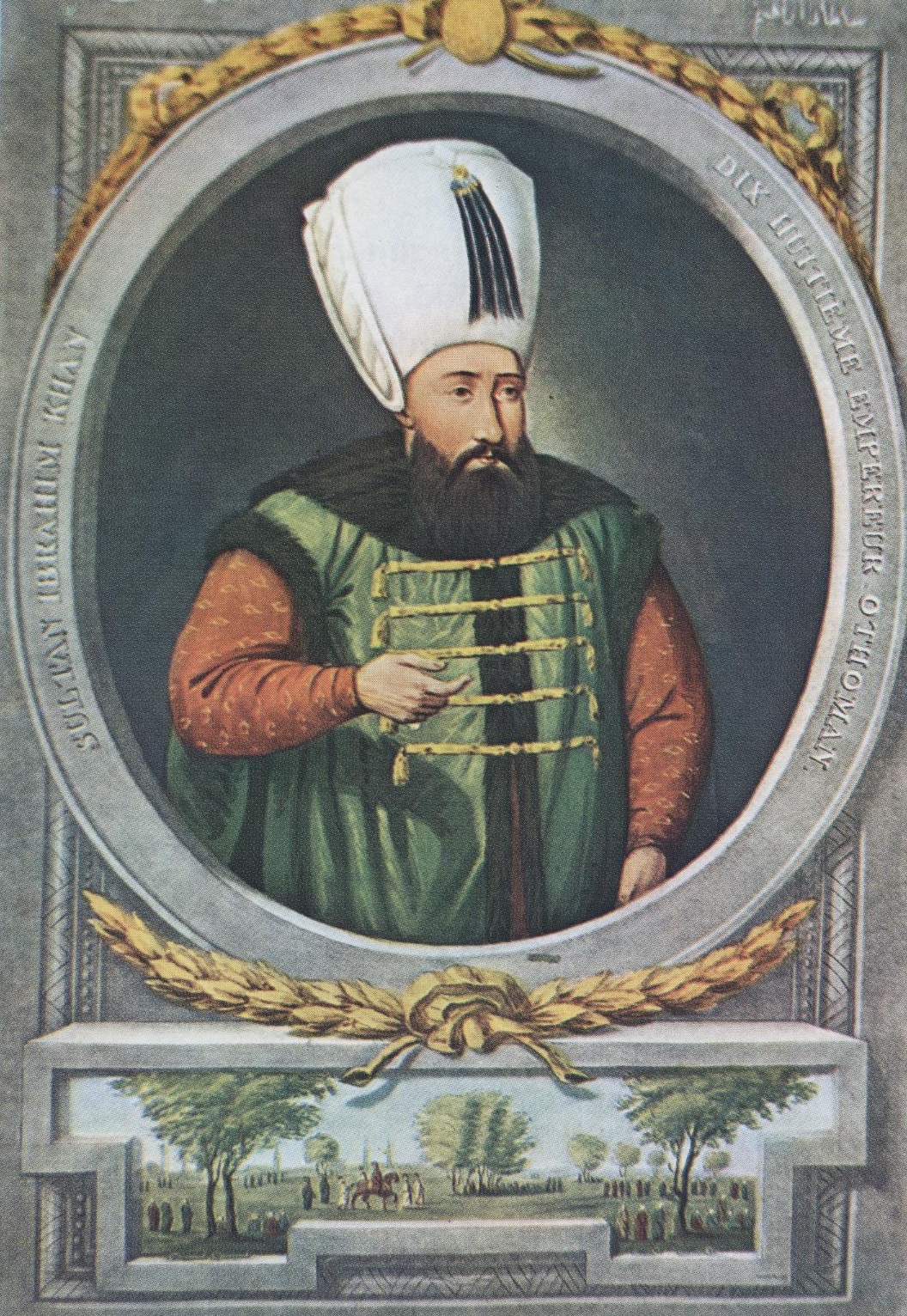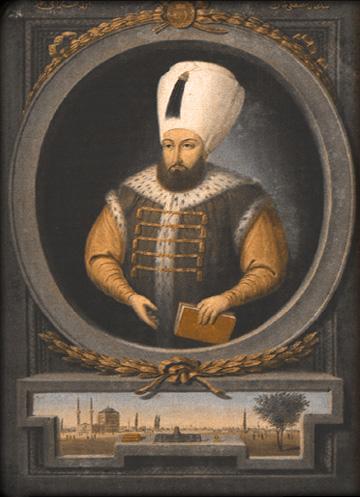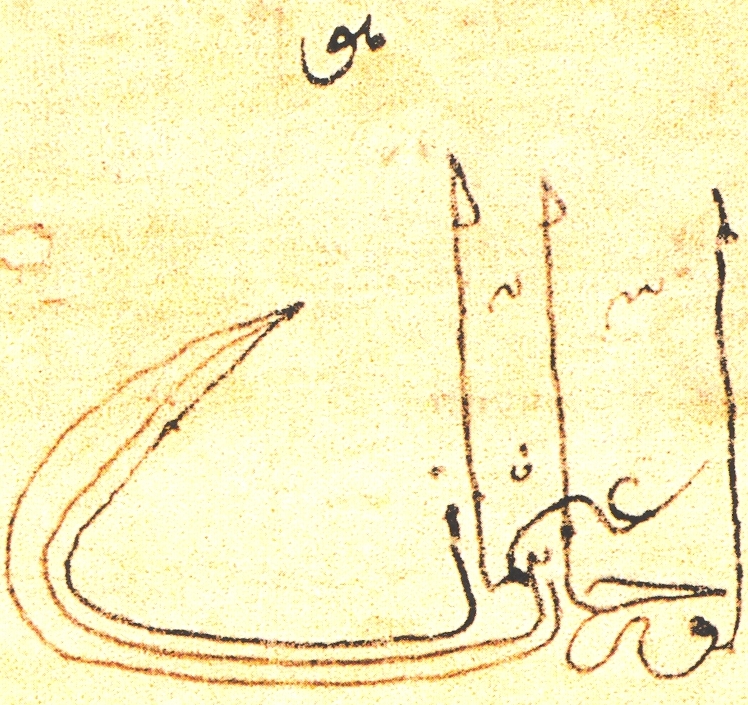|
Ibrahim Of The Ottoman Empire
Ibrahim (; ; ; 13 October 1617 – 18 August 1648) was the sultan of the Ottoman Empire from 1640 until 1648. He was born in Constantinople as the last son of sultan Ahmed I and Kösem Sultan, an ethnic Greek originally named Anastasia. He was called Ibrahim the Mad () due to his mental condition and behavior. However, historian Scott Rank notes that his opponents spread rumors of the sultan's insanity, and some historians suggest he was more incompetent than mad. Early life Ibrahim was born on 13 October 1617 as the last son of Sultan Ahmed I and his Haseki Sultan, Kösem Sultan and when he was merely a month old, his father suddenly died and Ibrahim's uncle Mustafa I became the new sultan. Kösem Sultan and her children, including an infant Ibrahim, were sent to the Old Palace. After his brother Murad IV inherited the throne from his uncle Mustafa I, Ibrahim was confined in the Kafes, which affected his health. Murad had Ibrahim's two surviving half-brothers Şehzade B ... [...More Info...] [...Related Items...] OR: [Wikipedia] [Google] [Baidu] |
Custodian Of The Two Holy Mosques
His Majesty the Custodian of the Two Holy Mosques (abbreviated as CTHM; ), or Protector of the Two Holy Cities, is a Royal and noble styles, royal style that has been used officially by the King of Saudi Arabia, monarchs of Saudi Arabia since 1986. The title has historically been used by many Muslim rulers in the past, including the Ayyubid dynasty, Ayyubids, the Mamluk Sultanate, Mamluks, the List of sultans of the Ottoman Empire, Ottomans and the Sharifate of Mecca, Sharifain rulers of Hejaz. The title was sometimes regarded to denote the ''de facto'' Caliph of Islam, but it mainly refers to the ruler taking the responsibility of guarding and maintaining the two Holiest sites in Islam, holiest mosques in Islam: Masjid al-Haram, Al-Haram Mosque (, 'The Sacred Mosque') in Mecca and the Prophet's Mosque () in Medina, both of which are in the Hejazi region of Saudi Arabia. The Custodian has been named the most powerful and influential person in Islam and the Sunni branch of Islam by ... [...More Info...] [...Related Items...] OR: [Wikipedia] [Google] [Baidu] |
Ahmed I
Ahmed I ( '; ; 18 April 1590 – 22 November 1617) was the sultan of the Ottoman Empire from 1603 to 1617. Ahmed's reign is noteworthy for marking the first breach in the Ottoman tradition of royal fratricide; henceforth, Ottoman rulers would no longer systematically execute their brothers upon accession to the throne. He is also well known for his construction of the Blue Mosque, one of the most famous mosques in Turkey. Early life Ahmed was born at the Manisa Palace, Manisa, probably on 18 April 1590, when his father Mehmed was still a prince and the governor of the Sanjak of Manisa. His mother was Handan Sultan. After his grandfather Murad III's death in 1595, his father came to Constantinople and ascended the throne as Sultan Mehmed III. Mehmed ordered the execution of his nineteen half brothers. Ahmed's elder brother Şehzade Mahmud was also executed by his father Mehmed on 7 June 1603, just before Mehmed's own death on 22 December 1603. Mahmud was buried along with hi ... [...More Info...] [...Related Items...] OR: [Wikipedia] [Google] [Baidu] |
Kafes
The Kafes (, from ), literally "cage", was the part of the Imperial Harem of the Ottoman Palace where possible successors to the throne were kept under a form of house-arrest and constant surveillance by the palace guards. The early history of the Ottoman Empire is littered with succession wars between rival sons of the deceased sultan. It was common for a new sultan to have his brothers killed, including infants,{{cite book , last=Meyer , first=G. J. , author-link=G. J. Meyer , date=May 30, 2006 , title=A World Undone: The Story of the Great War, 1914 to 1918 , publisher=Delacorte Press , page=89 , isbn=0553803549 sometimes dozens of them at once. This practice reduced the number of claimants to the throne, leading to several occasions where the Ottoman line seemed destined to end. The confinement of heirs provided security for an incumbent sultan and continuity of the dynasty. First use When Ahmed I died in 1617, his eldest son was only 13 years old, and for the first time ... [...More Info...] [...Related Items...] OR: [Wikipedia] [Google] [Baidu] |
Mustafa I
Mustafa I (; ; ; 1600/1602 – 20 January 1639) was twice the sultan of the Ottoman Empire from 22 November 1617 to 26 February 1618, and from 20 May 1622 to 10 September 1623. He was the son of sultan Mehmed III and Halime Sultan. Early life Mustafa was born around 1600/1602 in the Topkapı Palace, Topkapi Palace. He was son of Sultan Mehmed III and Halime Sultan, Halime Hatun, an Abkhazian concubine.Börekçi, Günhan. "Mustafa I." ''Encyclopedia of the Ottoman Empire''. Ed. Gábor Ágoston and Bruce Masters. New York: Facts on File, 2009. p. 409. Before 1603 it was customary for an Ottoman Sultan to have his brothers executed shortly after ascending the throne, (Mustafa's father Mehmed III had executed his nineteen half-brothers). But when the thirteen-year-old Ahmed I, Mustafa's older half-brother, was enthroned in 1603, he spared the life of Mustafa. Handan Sultan, mother of Ahmed I, was crucial to Mustafa's survival, as she convinced her son to spare his life. A ... [...More Info...] [...Related Items...] OR: [Wikipedia] [Google] [Baidu] |
Haseki Sultan
Haseki Sultan (, ''Ḫāṣekī Sulṭān'' ) was the title used for the chief consort of an Ottoman sultan. In later years, the meaning of the title changed to "imperial consort". Hurrem Sultan, principal consort and legal wife of Suleiman the Magnificent, was the first holder of this title. The title lost its exclusivity under Ibrahim I, who bestowed it upon eight women simultaneously. The title haseki sultan was used until the 17th century. After that, '' kadınefendi'' became the highest ranking title for imperial consorts, although this title was not as prestigious as haseki sultan. Term The word ''haseki'' (خاصکي-خاصگی) comes from the Arabic word ''Khassa'' (خاصه) which is suffixed with the Persian ''gi'' (گی) and means "to attribute something exclusively to". ''Haseki'' is, therefore, one who belongs exclusively to the sultan. Sultan (سلطان) is an Arabic word, that indicates "authority" or "dominion". starting from the 16th century, this title was ... [...More Info...] [...Related Items...] OR: [Wikipedia] [Google] [Baidu] |
Sultan Of The Ottoman Empire
The sultans of the Ottoman Empire (), who were all members of the Ottoman dynasty (House of Osman), ruled over the Boundaries between the continents, transcontinental empire from its perceived inception in 1299 to Dissolution of the Ottoman Empire, its dissolution in 1922. At its height, the Ottoman Empire spanned an area from Budin Eyalet, Hungary in the north to Yemen Eyalet, Yemen in the south and from Ottoman Algeria, Algeria in the west to Ottoman Iraq, Iraq in the east. Administered at first from the city of Söğüt since before 1280 and then from the city of Bursa since 1323 or 1324, the empire's capital was moved to Adrianople (now known as Edirne in English) in 1363 following Ottoman conquest of Adrianople, its conquest by Murad I and then to Constantinople (present-day Istanbul) in 1453 following Fall of Constantinople, its conquest by Mehmed the Conqueror, Mehmed II. The Rise of the Ottoman Empire, Ottoman Empire's early years have been the subject of varying narrat ... [...More Info...] [...Related Items...] OR: [Wikipedia] [Google] [Baidu] |
Ibrahim I
Ibrahim I may refer to: *Ibrahim I ibn al-Aghlab (756–812), first emir of the Aghlabids in Ifriqiya * Ibrahim I ibn Marzuban I ( 957–979), King of Dvin and Azerbaijan *İbrahim I of Karaman ( 1318–1343), bey of Karaman Beylik *Ibrahim I of Shirvan ( 1382–1418), Shah of Shirvan *Ibrahim of the Ottoman Empire (1615–1648), Caliph and Sultan of the Ottoman Empire from 1640 until 1648 See also *Ibrahim II (other) *Abraham I (other) Abraham I may refer to: * Abraham of Kashkar, a legendary primate of the Church of the East, 159–171 CE * Abraham I of Jerusalem, the first Armenian Patriarch of Jerusalem, 638–669 CE *Abraham I of Jerusalem, Greek Orthodox Patriarch of Jerusal ... * Sultan Ibrahim (other) {{human name disambiguation, Ibrahim 1 ... [...More Info...] [...Related Items...] OR: [Wikipedia] [Google] [Baidu] |
Sunni Islam
Sunni Islam is the largest Islamic schools and branches, branch of Islam and the largest religious denomination in the world. It holds that Muhammad did not appoint any Succession to Muhammad, successor and that his closest companion Abu Bakr () rightfully succeeded him as the caliph of the Muslim community, being appointed at the meeting of Saqifa. This contrasts with the Succession of ʿAlī (Shia Islam), Shia view, which holds that Muhammad appointed Ali, Ali ibn Abi Talib () as his successor. Nevertheless, Sunnis revere Ali, along with Abu Bakr, Umar () and Uthman () as 'Rashidun, rightly-guided caliphs'. The term means those who observe the , the practices of Muhammad. The Quran, together with hadith (especially the Six Books) and (scholarly consensus), form the basis of all Fiqh, traditional jurisprudence within Sunni Islam. Sharia legal rulings are derived from these basic sources, in conjunction with Istislah, consideration of Maslaha, public welfare and Istihsan, jur ... [...More Info...] [...Related Items...] OR: [Wikipedia] [Google] [Baidu] |
Tughra
A tughra (; ) is a calligraphy, calligraphic monogram, Seal (emblem), seal or signature of a sultan that was affixed to all official documents and correspondence. Inspired by the Tamga, tamgha, it was also carved on his seal and stamped on the coins minted during his reign. Very elaborate decorated versions were created for important documents that were also works of art in the tradition of Ottoman illumination, such as the example of Suleiman the Magnificent in the gallery below. The tughra was designed at the beginning of the sultan's reign and drawn by the court calligrapher or ''nisanci, nişancı'' on written documents. The first tughra examples are from the 14th century. Tughras served a purpose similar to the cartouche in ancient Egypt or the Royal Cypher of British monarchs. Every Ottoman sultan had his own individual tughra. Etymology There are two main schools of thought on the origins of the word tughra. The first sees it derived from a Turkic languages, Turkic secret ... [...More Info...] [...Related Items...] OR: [Wikipedia] [Google] [Baidu] |
Istanbul
Istanbul is the List of largest cities and towns in Turkey, largest city in Turkey, constituting the country's economic, cultural, and historical heart. With Demographics of Istanbul, a population over , it is home to 18% of the Demographics of Turkey, population of Turkey. Istanbul is among the List of European cities by population within city limits, largest cities in Europe and List of cities proper by population, in the world by population. It is a city on two continents; about two-thirds of its population live in Europe and the rest in Asia. Istanbul straddles the Bosphorus—one of the world's busiest waterways—in northwestern Turkey, between the Sea of Marmara and the Black Sea. Its area of is coterminous with Istanbul Province. Istanbul's climate is Mediterranean climate, Mediterranean. The city now known as Istanbul developed to become one of the most significant cities in history. Byzantium was founded on the Sarayburnu promontory by Greek colonisation, Greek col ... [...More Info...] [...Related Items...] OR: [Wikipedia] [Google] [Baidu] |
Hagia Sophia
Hagia Sophia (; ; ; ; ), officially the Hagia Sophia Grand Mosque (; ), is a mosque and former Church (building), church serving as a major cultural and historical site in Istanbul, Turkey. The last of three church buildings to be successively erected on the site by the Byzantine Empire, Eastern Roman Empire, it was completed in AD 537, becoming the world's largest interior space and among History of Roman and Byzantine domes, the first to employ a fully pendentive dome. It is considered the epitome of Byzantine architecture and is said to have "changed the history of architecture". From its dedication in 360 until 1453 Hagia Sophia served as the cathedral of Constantinople in the Divine Liturgy#Byzantine Rite, Byzantine liturgical tradition, except for the period 1204‑1261 when the Latin Empire, Latin Crusaders installed their own Hierarchy of the Catholic Church, hierarchy. After the fall of Constantinople in 1453, it served as a mosque, having its Minaret, minarets added ... [...More Info...] [...Related Items...] OR: [Wikipedia] [Google] [Baidu] |
Ottoman Empire
The Ottoman Empire (), also called the Turkish Empire, was an empire, imperial realm that controlled much of Southeast Europe, West Asia, and North Africa from the 14th to early 20th centuries; it also controlled parts of southeastern Central Europe, between the early 16th and early 18th centuries. The empire emerged from a Anatolian beyliks, ''beylik'', or principality, founded in northwestern Anatolia in by the Turkoman (ethnonym), Turkoman tribal leader Osman I. His successors Ottoman wars in Europe, conquered much of Anatolia and expanded into the Balkans by the mid-14th century, transforming their petty kingdom into a transcontinental empire. The Ottomans ended the Byzantine Empire with the Fall of Constantinople, conquest of Constantinople in 1453 by Mehmed II. With its capital at History of Istanbul#Ottoman Empire, Constantinople (modern-day Istanbul) and control over a significant portion of the Mediterranean Basin, the Ottoman Empire was at the centre of interacti ... [...More Info...] [...Related Items...] OR: [Wikipedia] [Google] [Baidu] |








